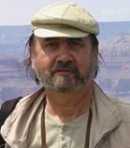

Plenary Lecture
Artificial Immune Systems and Swarm Intelligence for Pattern Recognition with Applications to Knowledge Discovery from Earth Observation Satellite Imagery

Professor Victor-Emil Neagoe
Department of Applied Electronics and Information Engineering
Polytechnic University of Bucharest
Romania
E-mail: victoremil@gmail.com
Abstract: Man has learned much from studies of natural systems, to develop new algorithmic models able to solve increasingly complex problems. Enormous successes have been achieved through modeling of biological and natural intelligence, resulting so-called „intelligent systems”. These nature-inspired intelligent technological paradigms are grouped under the umbrella called computational intelligence (CI). This lecture explores the nature and role of two bio-inspired paradigms, (chapters of CI), namely Artificial Immune Systems (AIS) and Swarm Intelligence (SI). Artificial Immune Systems (AIS) can be defined as adaptive systems, inspired by theoretical immunology and observed immune functions, principles and models, which are applied to problem solving. Swarm Intelligence (SI) is an innovative intelligent paradigm for solving optimization problems that originally took its inspiration from the biological examples of insects or animals that collectively exhibit complex behaviors, for example, bees, ants or birds. On the other side, modern environmental remote sensing satellite imagery, owing to their large volume of high-resolution data, offer greater challenges for automated image analysis. This lecture is an approach dedicated to the improvement and experimentation of Artificial Immune Systems (AIS) and Swarm Intelligence (SI) models for pattern recognition with applications in Earth Observation (EO) imagery. For the SI paradigm, one considers the model of Ant Colony Optimization (ACO). First model is an Unsupervised Artificial Immune System (UAIS), inspired from the vertebrate immune system, having strong capabilities of pattern recognition. We have implemented this model for a LANDSAT 7ETM+ multispectral image from the region of Bucharest (Romania) with four pixel categories (agricultural fields, artificial surfaces, forest, and water) ; using UAIS, one leads to the correct clustering multispectral pixel score better than performances obtained by applying K-Means and Fuzzy K-Means algorithms. Second model uses pixel classification by Ant Colony Optimization (ACO) algorithm which takes inspiration from the coordinated behavior of ant swarms. Using the ACO algorithm for pattern recognition in remote sensing imagery does not assume an underlying statistical distribution for the pixel data, the contextual information can be taken into account, and it has strong robustness. The experiments of ACO classification for a Landsat 7ETM+ image dataset (the same as that used in the first model) lead to promising results.
Brief Biography of the Speaker: Victor-Emil Neagoe was born in Pitesti (Arges county, Romania) on May 31, 1947. From 1965 till 1970 he attended the courses of the Faculty of Electronics and Telecommunications, Polytechnic Institute of Bucharest, Romania. In 1970 he received the M.S. degree of diplomat engineer in electronics and telecommunications as a head of his series with Honor Diploma. He also obtained the Ph.D. degree in the same field from the same institution in 1976 as well as the Postgraduate Master degree in applied mathematics and informatics from the Faculty of Mathematics, University of Bucharest in 1981 . From 1970 till 1976 he has been an Assistant Professor at the Faculty of Electronics and Telecommunications, Polytechnic Institute of Bucharest, while from 1978 till 1991 he has been a Lecturer at the same Institute and Faculty, courses: information transmission theory and applied electronics. Since 1991 he has been a Professor of the Polytechnic University of Bucharest, Romania, where he teaches the following courses: pattern recognition and artificial intelligence; digital signal processing; computational intelligence; data mining. He has been a Ph.D. supervisor since 1990. He has published more than 120 papers; his research interest includes pattern recognition, nature inspired intelligent techniques (computational intelligence), multispectral and hyperspectral satellite/aerial image analysis, image compression and recognition, biometrics, sampling theory. He has been a Member of IEEE since 1978 and a Senior Member IEEE since 1984. Prof. Neagoe has been included in Europe 500 . He has been also included in Who’s Who in the World 2011 and 2012 (28th and 29th Editions) as well as in Who’s Who in Science and Engineering 2011-2012 (11th Edition).